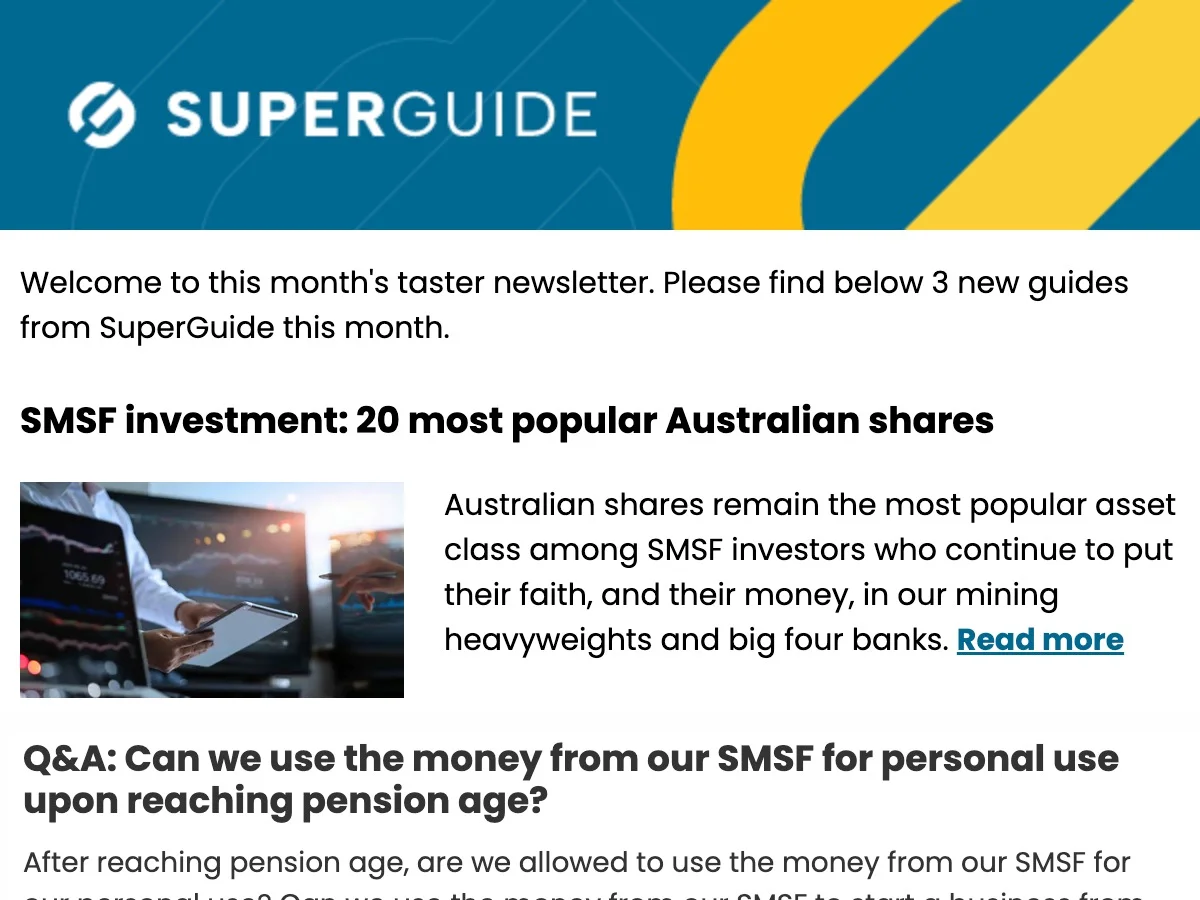One of the responsibilities of being a trustee for a self-managed super fund (SMSF) is taking and keeping trustee minutes that record all major decisions made by the fund.
It sounds easy enough, but if you have never taken minutes in a meeting you may be unsure about what needs to be minuted and what a minute should look like.
In this article we look at the main kinds of minutes and resolutions. We’ll also provide some minute templates that might be helpful for your SMSF.
Minutes and resolutions
Like most minutes at any kind of meeting, an SMSF minute is a record of a decision made, or matter reviewed.
A minute will most likely include a resolution, which could be as simple as:
2026 SMSF calendar
Our free calendar includes due dates for important documents plus suggested dates for trustee meetings and other strategic issues for your SMSF.
"*" indicates required fields
The trustees of XYZ superannuation fund resolve to maintain their current investment strategy.
Or as complex as a resolution segregating assets to start a pension for one member while another remains in accumulation phase. For example:
The two trustees of ABC superannuation fund resolve to split their fund’s assets into two pools. One pool will support Trustee A’s pension and the other pool will be Trustee B’s accumulation fund.
Asset X will be sold to Trustee A from Trustee B.
Asset Y will be sold and the proceeds will be invested in liquid Australian equities to support Trustee A’s pension.
Issues you need to minute and record include major decisions by the fund, such as:
- The establishment of the fund
- The addition (or loss) of a member
- Starting a pension
- The initial agreement on the fund’s investment strategy and any changes to it
- Approval of the annual financial statement.
Tasks such as appointing an auditor and an accountant also need a resolution from the fund and a minute recording that resolution.
Any changes to the trust deed must also be minuted. Changes could include allowing your SMSF to buy property or operate a pension for a member.
What should a minute look like?
Even if you are the sole individual trustee of your SMSF, you still need to keep minutes of your decisions. So what should a minute look like? Is there a standard template?

Free eBook
SMSF investing essentials
Learn the essential facts about the SMSF investment rules, how to create an investment strategy (including templates) and how to give your strategy a healthcheck.
"*" indicates required fields
The Superannuation Industry Supervision Act (1993) merely states that a minute must be kept (see below). It does not stipulate what a minute must look like.
Duty to keep minutes and records:
(1) If a superannuation entity has a group of individual trustees, the trustees must keep, and retain for at least 10 years, minutes of all meetings of the trustees at which matters affecting the entity were considered.
(2) If there is only one trustee of a superannuation entity:
(a) if the trustee is a corporate trustee – the directors of the trustee must keep, and retain for at least 10 years, minutes of all meetings of the directors at which matters affecting the entity were considered; or
(b) if the trustee is an individual – the trustee must keep, and retain for at least 10 years, a record of all decisions made by the trustee in respect of matters affecting the entity.
(2A) The trustee or trustees must also retain for at least 10 years an election, or a copy of an election, under section 71E.
Source: Superannuation Industry (Supervision) Act 1993 – Section 103
Let’s look at an example. Below is a minute for an investment change.
As you can see from the above, a minute does not have to be a complicated or extensive document. It simply needs to state what the trustees have decided for the fund, and why.
The regulator likes all minutes to be written and in English. If they are kept electronically, they must be easily accessible and understood. Minutes must be kept for all trustee meetings and resolutions.
Minutes for some actions, such as starting a pension, will be more complex. The process of commencing a pension will also include documentation like a pension agreement or potentially a product disclosure statement, and an SMSF would do well to note the existence of the new documentation in the minutes.
It’s also important to refer to a fund’s trust deed when starting a pension.
Supercharge your SMSF

"*" indicates required fields
Here is a minute for a two-member fund where one member (G Apple) is now joining the other in retirement and will receive a pension from the fund.
The bottom line
All minutes are legal documents that you are required to keep, so don’t forget to make one even if you think the conversation you had with your spouse or fellow SMSF member was quite informal. And err on the side of caution when it comes to what information to include. It’s always better to have too much information than not enough.



Leave a Reply
You must be logged in to post a comment.